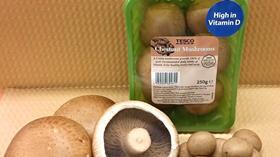
Treating fruits and vegetables with pulsed light can make them more nutritious, scientists have discovered.
The method, which involves subjecting the fruit to bursts of light of different wavelengths for a few thousandths of a second, was invented to kill microbes on the surface of food.
But tests showed that one of the side effects of the technique was to enhance the levels of antioxidants in the food.
It has been shown to double the level of antioxidants in tomatoes and to increase vitamin C levels in mangoes.
Tesco already sells chestnut mushrooms that have been treated with the technique to augment its level of vitamin D2 and trials are underway to extend its use to other products.
Dilip Rai of Teagasc, the Irish agriculture and food development authority which funded the study, said the method works by triggering the self-defence mechanism of plants.
“A very common example of UV light stress is skin cancer in humans, where UV light is associated with DNA structural damage,” he said.
While the method is not widely used at present, Dr Rai believes today’s increasingly health-conscious consumers could prompt a wave of interest from food manufacturers.
“A similar mechanism applies in plants. However, the plants respond by triggering the synthesis of phytochemicals to protect themselves against DNA damage.”
James Lyng, a food technologist from University College Dublin’s Institute of Food and Health, told The Times the technique is unlikely to be dangerous as it does not create any chemicals that were not already in the plant.



